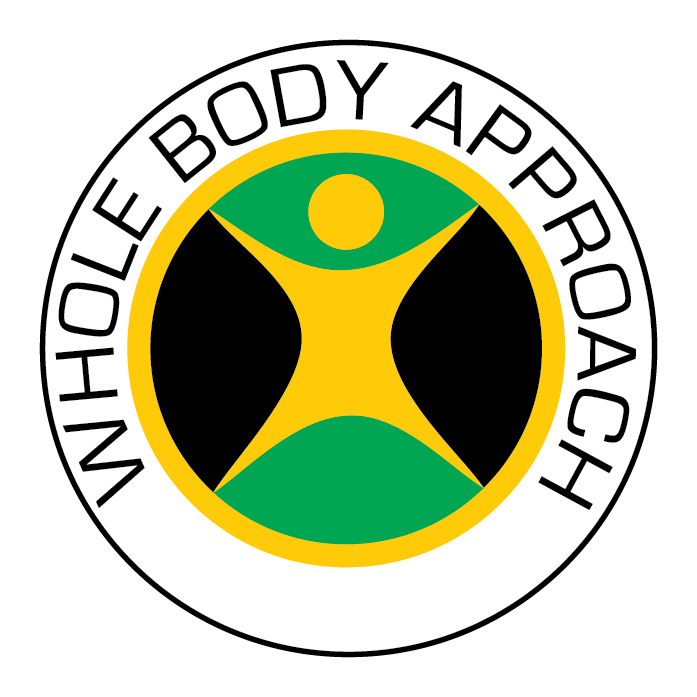The Hard Gainer's Guide: Tips to Build Muscle and Gain Muscle Mass
Building muscle can feel like an uphill battle for many, but it can seem downright impossible for hard gainers—those who struggle to gain weight and muscle mass due to a fast metabolism or other genetic factors. Fear not! With the right strategies, even the hardest of hard gainers can pack on muscle and transform their physique. Here's your ultimate guide to overcoming the hard gainer challenge.
Understanding the Hardgainer Body Type
Before diving into the solutions, it’s essential to understand what makes someone a hard gainer. Hardgainers typically:
Have a fast metabolism that burns calories quickly.
Struggle to maintain or gain weight, even with increased food intake.
More strategic training and nutrition plans are required than others.
The key to success is creating a calorie surplus, following a structured workout plan, and ensuring adequate recovery.
Nutrition for Hardgainers: Fueling Muscle Growth
Increase Your Calorie Intake
To gain muscle as a hard gainer, you must eat more calories than your body burns. Start by calculating your maintenance calorie level (the number of calories needed to maintain your current weight) and add 300–500 calories daily to create a surplus. For some hard gainers, this may mean consuming over 4,000–5,000 calories daily.
Focus on Calorie-Dense Foods
Eating large quantities of food can be challenging, so prioritise calorie-dense options:
Proteins: Eggs, chicken, fish, lean beef.
Carbohydrates: Rice, oats, potatoes, pasta.
Fats: Avocados, nuts, nut butter, olive oil.
Snacks: Smoothies with protein powder, peanut butter, and fruits.
Eat Frequently
Instead of three large meals, aim for 5–6 smaller meals throughout the day. This helps you hit your calorie goals without feeling overly stuffed.
Don’t Fear Liquid Calories
Smoothies and shakes are an excellent way to add calories without making you feel too full. Include protein powder, milk, oats, peanut butter, and bananas.
The Hardgainer Workout Plan: Train Smart
Prioritise Compound Exercises
Compound movements like squats, deadlifts, bench presses, and pull-ups recruit multiple muscle groups simultaneously. These exercises create the most significant hormonal response for muscle growth.
Progressive Overload is Key
Hardgainers need to focus on progressively increasing the weight they lift over time. This ensures that muscles are continually challenged and forced to grow.
Limit Training Frequency
Training too often can lead to overtraining and hinder recovery. A full-body workout routine performed three times per week is ideal for most hard gainers.
Sample Full-Body Workout:
Squats: 4 sets of 6–8 reps
Deadlifts: 4 sets of 5 reps
Bench Press: 3 sets of 6–8 reps
Pull-Ups: 3 sets of 8–10 reps
Overhead Press: 3 sets of 8–10 reps
Include Isolation Exercises Sparingly
After completing compound lifts, add one or two isolation exercises (e.g., bicep curls or tricep extensions) to target smaller muscle groups.
Recovery: The Unsung Hero of Muscle Growth
Get Quality Sleep
Muscle growth happens during rest—not in the gym. Aim for 7–9 hours of sleep per night to allow your body to repair and grow stronger.
Rest Between Workouts
Hardgainers often benefit from more recovery time between sessions. Stick to training every other day or three times per week.
Manage Stress
High-stress levels can increase cortisol production, which may hinder muscle growth. Incorporate stress-reducing activities like yoga or meditation into your routine.
Supplements for Hardgainers
While whole foods should be your primary source of nutrients, supplements can help fill gaps in your diet:
Protein Powder: Helps meet daily protein requirements.
Creatine: Enhances strength and performance during workouts.
Mass Gainers: High-calorie shakes explicitly designed for those struggling to gain weight.
Multivitamins: Ensure you’re getting essential vitamins and minerals.
Common Mistakes Hardgainers Should Avoid
Underestimating Calorie Needs: Many hard gainers think they eat enough but fall short of their calorie goals. Track your intake using apps like MyFitnessPal.
Overtraining: More isn’t always better. Focus on quality over quantity in your workouts.
Skipping Recovery: Rest days are as important as training for building muscle mass.
Neglecting Form: Poor technique can lead to injuries and hinder progress. Always prioritise proper form over lifting heavier weights.
Conclusion
Gaining muscle as a hard gainer is no easy feat—it requires discipline, consistency, and a well-thought-out plan. By eating in a calorie surplus, focusing on compound exercises with progressive overload, and prioritising rest and recovery, you’ll be well on your way to building the physique you’ve always wanted.
Remember that progress takes time. Stay patient and committed; every meal you eat and every workout you complete brings you closer to your goal!
FAQs
1. How many calories should I eat as a hard gainer?
Start by adding 300–500 calories above your maintenance level daily. Adjust based on progress—increase your intake if you’re not gaining weight after two weeks.
2. Can I do cardio as a hard gainer?
Yes! Low-intensity cardio (e.g., walking) a few times per week is OK and can even aid recovery by improving blood flow. Avoid excessive high-intensity cardio that burns too many calories.
3. How long will it take me to see the results?
Muscle growth is a slow process—expect noticeable changes after 8–12 weeks of consistent effort with proper nutrition and training.
4. Should I take supplements?
Supplements like protein powder and creatine can be helpful but aren’t mandatory. Instead, focus on getting most of your nutrients from whole foods.
5. What if I’m not gaining weight despite eating more?
If weight gain stalls, increase your daily calorie intake by another 200–300 calories until progress resumes.
Citations: [1] https://mindpumppodcast.com/blog-post/5-muscle-building-tips-for-hardgainers/ [2] https://www.americansportandfitness.com/blogs/fitness-blog/hardgainers-guide-to-mass-gain-7-tips-to-pack-on-the-pounds [3] https://www.muscleandstrength.com/workouts/ex-hardgainer-workout-eating-plan.html [4] https://www.heart.org/en/healthy-living/fitness/getting-active/how-to-get-your-family-active [5] https://www.muscletech.com/blogs/journal/hardgainer [6] https://wellhub.com/en-us/blog/increasing-membership/top-fitness-hashtags/ [7] https://www.maxinutrition.com/blogs/nutrition/training-tips-for-hard-gainer-muscle [8] https://www.mindpumpmedia.com/blog/strength-training-secrets-for-hardgainers [9] https://www.livestrong.com/article/13768160-hardgainer-build-muscle-guide/ [10] https://www.youtube.com/watch?v=2gzBcPa4Is0 [11] https://www.bodybuilding.com/fun/hardgainer-helper-10-training-and-nutrition-tips.html [12] https://reshapeinfinityfitness.co.uk/personal-trainer-liverpool/maximising-muscle-gain-hardgainers-scientific-approach/ [13] https://builtwithscience.com/fitness-tips/how-to-pack-on-muscle-hardgainer/ [14] https://fitbod.me/blog/bulking-with-a-fast-metabolism/ [15] https://www.health.harvard.edu/staying-healthy/exercising-to-relax [16] https://kidshealth.org/en/parents/exercise.html [17] https://www.performancehealth.com/articles/20-family-fitness-ideas-beyond-the-gym [18] https://www.nia.nih.gov/news/how-can-strength-training-build-healthier-bodies-we-age [19] https://parentingagingparents.com/functional-fitness-for-our-aging-parents/ [20] https://pmc.ncbi.nlm.nih.gov/articles/PMC7068252/

